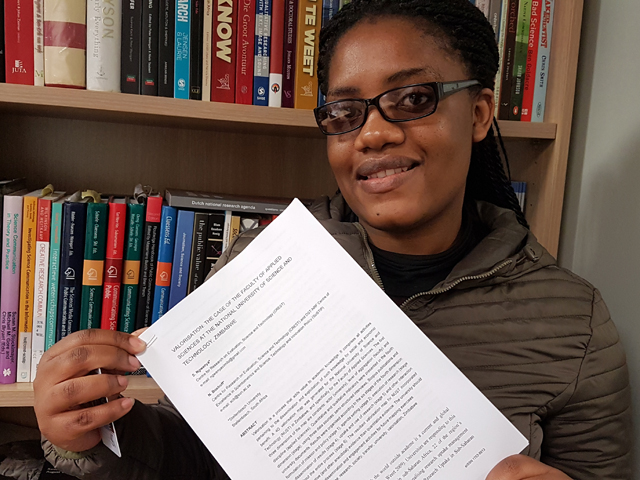29 May 2018
A new research article, based on the Master’s research project of Similo Ngwenya has just been published in the South African Journal of Higher Education – The article describes the process of developing a ‘4D valorisation model’ that can be used as an assessment tool to manage and measure research impact.
“Generally, valorisation refers to a process whereby the strategies, initiatives, processes and activities of universities serve to facilitate the uptake, and hence use and impact, of university research by societal and economic audiences,” Similo explains. “The valorisation concept is closely aligned with related notions such as science impact, knowledge transfer or the third mission of universities.”
There has been a worldwide emphasis on the ‘third mission’, the need for universities to connect directly to the external world. Academic research is perceived as providing the most reliable evidence upon which to base decisions and determine appropriate courses of action for responding to intractable societal challenges. In the Netherlands, the legally prescribed ‘third task’ of universities of transferring knowledge for the benefit of society, is referred to as ‘valorisation’.
Considering the increasing responsibility for universities to produce research that has societal benefits, a set of process-oriented approaches has surfaced in the assessment of research impact. The focus of these approaches is not on the long-term outcome (impact) of research but on the mechanisms and processes responsible for creating impact. The 4D valorisation is one such model.
The current study applied the 4D valorisation model to a developing country institution, namely the National University of Science and Technology (NUST) in Zimbabwe, and specifically the university’s Faculty of Applied Sciences (FAS). Three objectives directed the study: firstly, to investigate how valorisation is embedded in the practices of FAS at NUST; secondly, to highlight the relevant indicators of valorisation and, thirdly, to reflect on the availability of data for such indicators. A 4D valorisation map was generated for the Faculty of Applied Sciences. The first three dimensions of the map are constants: actor (university), level of aggregation (faculty) and discipline (applied sciences). Quantitative and qualitative indicators were presented in the fourth dimension (stage), using three data sources: semi-structured interviews, Scopus publications and university documents. Results were organised according to the six stages of the fourth dimension: formulation of mission and policy (stage 1), agenda setting (stage 2), execution of research (stage 3), dissemination of results (stage 4), uptake and use of research (stage 5) and other interaction throughout the entire process (stage 6). The resultant valorisation map for NUST incorporated more qualitative (and often anecdotal) evidence than quantitative evidence.
Similo Ngwenya, co-author of this article, is currently a PhD student at CREST. Her PhD study explores research collaboration in Zimbabwe, with a focus on the types, drivers and effects of these collaborations. “I would like to thank my supervisor and co-author, Professor Nelius Boshoff, for his invaluable support throughout my research.”



